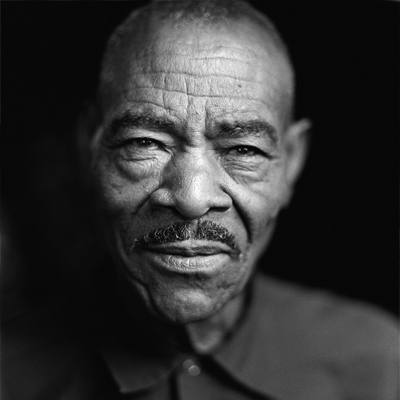Thornton Dial
 “Art ain’t about paint. It ain’t about canvas. It’s about ideas. Too many people died without ever getting their mind out to the world. I have found how to get my ideas out and I won’t stop. I got ten thousand left.” Thornton Dial, Born Alabama, 1928
“Art ain’t about paint. It ain’t about canvas. It’s about ideas. Too many people died without ever getting their mind out to the world. I have found how to get my ideas out and I won’t stop. I got ten thousand left.” Thornton Dial, Born Alabama, 1928
In 1993, Dial had concurrent solo exhibitions at the Museum of American Folk Art and The New Museum for Contemporary Art. His work was exhibited in the 2000 Whitney Biennial. His paintings and constructions can be found in many significant collections as well as such museums' permanent collections as The Hirshhorn Museum (Washington D.C.), Museum of Fine Art Houston (2005), Montclair Art Museum (New Jersey) and The High Museum (Atlanta). His work is also prominently featured in the Smithsonian’s traveling exhibition of African American masters.
Thornton Dial lived in a remote farming region of Alabama where the great depression had been the sole reality for centuries. Dial’s life was not unusual. He built highways, houses, boxcars…and in his spare time he built things that had no names. They were just things and he enjoyed building them, though he didn’t know what to call them for forty more years. White people, he would learn, call them art.
People like Dial, however, were not allowed to build art, not officially anyway. He did it, nonetheless, because it gave him enormous satisfaction. Dial was a man of ideas, big ideas, and lots of them, but what could he do with those ideas? He couldn’t write them down because he never had learned to write. Dial was able to create a language, known only to himself perhaps, but a language through which he could record his observations, his opinions, and his convictions.
Since as far back as he can remember, Thornton Dial has always created things. As a self-taught artist who has had little education and no exposure to the formal art world, he developed a style that is truly his own.
Dial’s work has been exhibited alongside Johns and Rauschenberg. Compared to the weaving restless quality of Dial, their art appears almost classical in its striving for conventional elegance, balance, and symmetry. Dial, on the other hand, seems to compress a layering of three or four paintings and sculptures into one explosive moment. Dial has no trouble giving us classical elegance, balance, and symmetry, but his ambition seems to begin with those qualities and then go on from there.
His work encompasses subjects ranging from the most intimate, personal experiences to the most expansive philosophical observations: “If my art don’t rub off on somebody, it ain’t art," and “I make art that ain’t speaking against nobody or for nobody either.”
It is through his symbolic use of animal and plant images as well as found objects that he is able to express poignant observations about personal relationships, families, individual character, aspirations, race relations, government, industry, and the environment.
Dial's works have been compared to those of Baselitz, Kiefer, Schnabel and other celebrated artists. His perspective and technique may have peers in the mainstream art world. However, those qualities coupled with such profound emotional power and piercing socio-political commentary make a rare combination.
Preternaturally gifted” is how New York Times art critic Michael Kimmelman aptly characterized Dial. Thornton Dial had created a plethora of paintings, assemblages, sculptures, and drawings which so closely parallel the arts of America’s mainstream that it should be obvious that America’s black vernacular culture is not only a thoroughly viable voice within America’s mainstream, but a thoroughly viable voice within America’s mainstream art.















